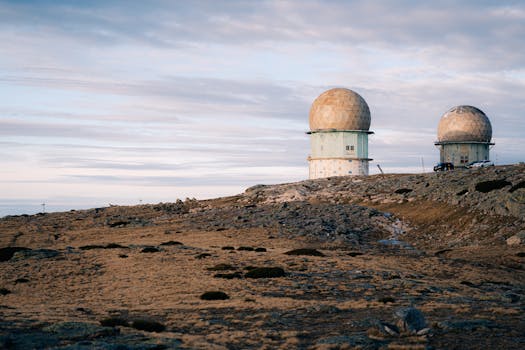Beyond the Atmosphere: The Future of Satellite Technology for Surveillance and Connectivity
The future of satellite technology is rapidly evolving, with advancements in surveillance and connectivity capabilities. This article explores the current state and potential applications of satellite technology, including its role in space exploration, military operations, and global communication networks.

Beyond the Atmosphere: The Future of Satellite Technology for Surveillance and Connectivity
Satellite technology has come a long way since the launch of the first artificial satellite, Sputnik, in 1957. Today, satellites play a crucial role in various aspects of our lives, from navigation and communication to weather forecasting and space exploration. The focus keyword Satellite Technology is becoming increasingly important as we continue to push the boundaries of what is possible beyond the atmosphere. In this article, we will delve into the current state of satellite technology, its applications, and the future developments that will shape the industry.
The use of satellites for surveillance has become a vital component of modern military operations. Satellites equipped with high-resolution cameras and sensors can provide real-time imagery and data on enemy movements, allowing for more informed decision-making on the battlefield. Additionally, satellites are used for monitoring environmental changes, such as deforestation, ocean health, and climate patterns. This information is essential for developing effective conservation strategies and mitigating the effects of climate change.
Another significant application of satellite technology is in the field of connectivity. Satellites can provide internet access to remote and underserved areas, bridging the digital divide and enabling global communication. This is particularly important for emergency response situations, where reliable communication is critical. Furthermore, satellites are used for navigation, providing location information and timing signals for GPS, GLONASS, and other satellite navigation systems.
The Current State of Satellite Technology
Currently, there are over 5,000 satellites in orbit around the Earth, with many more planned for launch in the coming years. The development of smaller, more efficient satellites has reduced the cost of access to space, making it possible for more countries and organizations to participate in the satellite industry. The use of advanced materials and technologies, such as 3D printing and solar panels, has also improved the performance and lifespan of satellites.
One of the most significant advancements in satellite technology is the development of constellations. A constellation is a network of satellites that work together to provide global coverage and continuous service. Constellations are being developed for a range of applications, including communication, navigation, and Earth observation. For example, the OneWeb constellation, which is expected to comprise over 600 satellites, aims to provide global internet access and bridge the digital divide.
Future Developments and Applications
The future of satellite technology holds much promise, with several exciting developments on the horizon. One of the most anticipated advancements is the use of quantum satellites for secure communication. Quantum satellites will use quantum entanglement to create secure communication channels, enabling the transmission of sensitive information with unparalleled security.
Another area of development is the use of satellites for space exploration. Satellites will play a critical role in future space missions, providing communication, navigation, and scientific data. For example, the European Space Agency’s (ESA) JUICE mission, which is scheduled to launch in 2022, will explore Jupiter’s icy moons and search for signs of life beyond Earth.
Conclusion
In conclusion, the future of satellite technology is rapidly evolving, with significant advancements in surveillance and connectivity capabilities. As we continue to push the boundaries of what is possible beyond the atmosphere, satellites will play an increasingly important role in shaping our world. From space exploration and military operations to global communication networks and environmental monitoring, the applications of satellite technology are vast and varied. As we look to the future, it is clear that satellite technology will remain a vital component of our daily lives, enabling us to communicate, navigate, and understand our world in ways that were previously unimaginable.